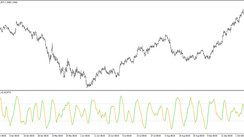China's Overhaul in Currency Composition
The Asian country of China, according to a recent declaration made by its foreign exchange trade system this past Friday, plans to amend the weightings of two primary yuan index baskets. This forthcoming alteration in 2024 is designed to provide a precise representation of trade models and suggests upcoming changes in the global economy.
The CFETS or the China Foreign Exchange Trade System, operating under the purview of China's central bank, has planned to reduce the U.S. dollar's portion within the CFETS currency basket from 19.83% to 19.46%. Likewise, the significance of the Euro is also slated to be lowered from its current 18.21% to 18.08%. This revised configuration announced publicly on their website is aspired to "enhance the importance of the yuan currency basket index," according to the CFETS.
Previous Alterations and Market Trends
Before this, in 2023, China had made cuts in the dollar and euro weightages in the CFETS basket. Although these modifications are unlikely to cause drastic changes in the yuan dealings, they hold considerable potential to determine the yuan's formal daily midpoint fixing, thereby restricting spot trade to a narrow 2% guided by that level, as market professionals have pointed out.
By the end of the previous year, the CFETS index had an average of 97.42, indicating an annual drop of 1.27%, as calculated by Reuters from official figures. Acting in unison, the onshore yuan registered a 2.7% decline against the dollar and seems poised for another annual dip. To more precisely illustrate global trade scenarios, China has been consistently adjusting the CFETS basket since its inauguration of the trade-weighted yuan index in December 2015.
Future Plans by CFETS for Currency Basket
Moreover, the CFETS has made plans to reform its RMB index within the BIS (Bank for International Settlements) currency basket. This decision follows the adjustments in currency weightings brought in by BIS earlier in the year. As part of this change, the CFETS intends on replacing the Croatian kuna with new entrants like the Bosnian marka, Moroccan dirham, North Macedonian denar, and Serbian dinar in the BIS basket.





